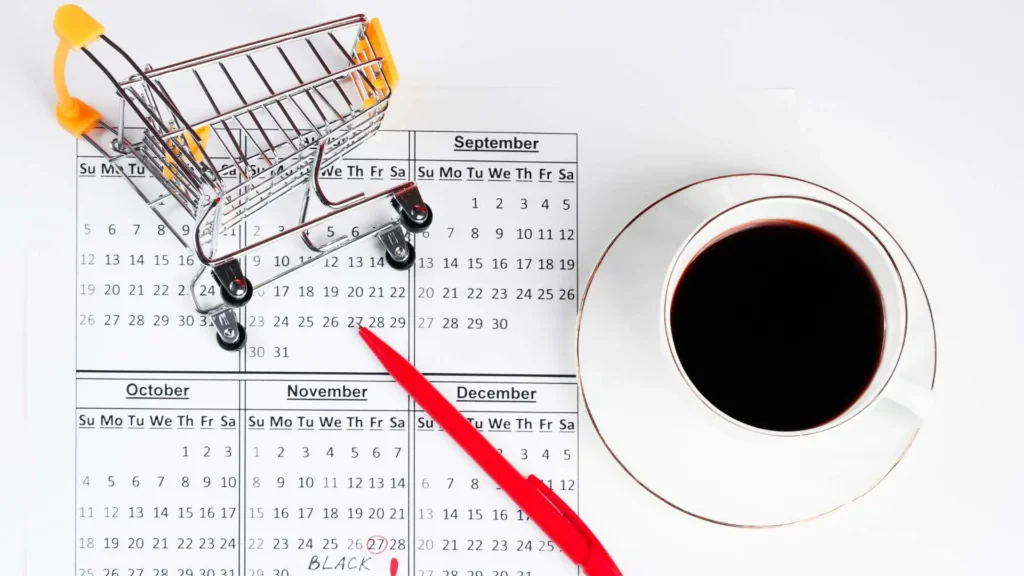Have you ever glanced at your bank balance on a Sunday night? And wondered where all your money went? One coffee here, a few takeaway orders there, maybe a movie or two, and suddenly your wallet feels empty. That is why it is so important to understand your weekly pace of consumption.
Your weekly pace of consumption is like a speedometer for your wallet. It helps you see how fast you spend your money and what drives your choices. Unlike monthly budgets, they are too broad, and daily logs are too much work. But weekly tracking is simple and just right.
In this blog, you’ll learn what weekly spending pace reveals about your habits, how to track spending, and how to use BudgetGPT to make better money choices. If you want to boost your money management skills and build better student budgeting habits, you’re in the right place.
What Is Weekly Spending Pace?
Your weekly spending pace is the average amount of money you spend in a week. It shows how quickly or slowly your money is being spent. Think of it like your financial speedometer. Instead of guessing where your money went, your pace tells you exactly how much you’re spending every 7 days. If you usually spend $300 a week, that’s your pace.
Here’s why not daily or monthly:
- Daily tracking shows what you spend each day. It’s detailed but hard to keep up with. One busy day, and you forget to log in.
- Tracking monthly gives you an overview, but it can also obscure the small ups and downs that contribute to overspending.
With a weekly check-in, you can catch bad habits before they worsen.
Why Your Weekly Spending Pace Matters
Your money habits build up week by week. If you don’t keep track, you may not notice how quickly your money is being spent. That is why your weekly spending pace is important. It provides a clear picture of how you manage money in real time. Here’s more on How to Spot and Fix Bad Money Habits with Data.
Here are some reasons why understanding your weekly pace can help you stay in control and improve your financial health:
1. Keeps Your Money Healthy
When you track weekly, you avoid those “How did I spend all my money?” moments. Consistent pacing means your money management stays in check. Suddenly, your account feels less chaotic and more controlled.
2. Spots Spending Leaks
A sudden $50 spike could mean a few extra Uber rides or an unplanned lunch out. Weekly tracking lets you spot these leaks fast. Fix them now, not the next paycheck.
3. Helps You Save Smarter
You can’t save if you don’t know your pace. Weekly numbers tell you where to cut back. Want to save $200 this month? Just shave off $50 from each weekend.
4. Builds Confidence
Tracking weekly builds and small wins. “I stayed under my $150/week limit!” feels way better than “I didn’t go over $600 this month.” That sense of achievement adds up.
5. Improves Budget Accuracy
Budgeting feels like guesswork until you check your pace weekly. Want fast or chill weeks? You’ll know exactly what you can truly afford.
6. Encourages Accountability
Friends spent more than you did? Weekly tracking highlights that—no harsh judgment, just transparency. You get clear data on your habits and how they stack up.
How to Track Your Weekly Spending Pace
Want to know where your money goes before it disappears? Tracking your weekly spending pace gives you a full view of your money life, week by week. It’s not boring math. It’s about seeing patterns, spotting problems early, and building smart money management habits.
Here are three super simple ways to start tracking today:
Use Apps (Easy & Automate)
Blitz is a student-focused app that makes money tracking super easy. It comes with BudgetGPT, an AI tool that understands how students spend.
Just open the HomeChat tab and type things like:
- “Track my spending this week.”
- “How much did I spend on takeout?”
- “Am I over my budget?”
BudgetGPT shows weekly totals, points out categories such as food or transport, and provides tips if you use too much. This makes it easier to track expenses, build strong money management skills, and stay up to date on student budgeting.
Make Your Own Spreadsheet
If you like to manage things, try a spreadsheet. They help you use and improve money management and develop smart budgeting habits for students.
Just open Google Sheets or Excel and start making a simple table. For example, your weekly budget might look like this:
| Category | Planned Weekly Budget ($) | Actual Spending ($) |
| Food | $50 | $45 |
| Entertainment | $30 | $15 |
| Transport | $55 | $40 |
| Rent | $80 | $80 |
| Utility Bills | $100 | $80 |
| Other Expenses | $40 | $55 |
| Total | $355 | $315 |
By the end of the week, you’ll know if you stayed within your budget for each category or overspent.
Check bank statements weekly
If you don’t want to use any app, that’s okay. You can simply check your bank statement once a week. Pick a day, like Sunday night, and look at all the money you spent during the week. Add it up and see if you stayed within your limit.

What Your Weekly Spending Pace Reveals About Your Habits
When you start checking the weekly pace of consumption, you start noting real things about your money habits. It shows when you spend the most, what triggers your expenses, and where your money goes every week. Let’s look at what your pace reveals:
Spending Patterns and Triggers
The weekly pace of consumption shows clear patterns in your expenses. A few weeks you spend more and other weeks you spend less. Understanding these patterns helps improve your money management. Read about How to Use Blitz Money to Identify Your Top Spending Categories.
Here are common patterns to look for:
- Weekend Splurges: Many students fast-spend Friday to Sunday—late-night food, group hangouts, and events. Your weekly pace spikes. These patterns can drain your fun money fast.
- Payday Spikes: Right after your part-time gig, you might overspend—“I deserve this” mode kicks in. But a spike sets you up for a low-balance crash later.
- Impulse Buys: Sudden drops mid-week: random online purchase, vending machine treat. Spotting impulse triggers means better control.
Fast vs. Steady Spenders
Everyone has their own spending style. Some students use their money quickly. Others move slowly and steadily.
- Fast spenders use their money quickly and buy things they want right away, but they may run out before the week is over.
- Steady spenders plan and spread their spending to make it last all week, but may miss out on fun if they are too strict.
Category Insights
When you track your weekly pace, you start to see where your money really goes. Breaking your spending into categories shows what’s taking up the biggest piece of your budget.
Here are the common categories for students:
- Food and snacks
- Coffee and drinks
- Entertainment
- Transport
- Shopping
Once you list these out, patterns appear. Maybe you spent $70 on food and only $5 on class supplies. That’s a clue to rebalance. BudgetGPT inside the Blitz app can help you sort spending by category and find smarter ways to manage each one. Here’s How to Use BudgetGPT to Set and Reach Your Savings Goals.
Comparing Your Pace Over Time
Once you track your weekly spending pace for a few weeks, it’s time to go deeper. One week gives you a snapshot. But comparing your pace over time shows the full picture of your money habits.
Here is what you can do:
Set a baseline
Choose an average weekly spending amount. For example, $200. Use it to check if you are spending more or less each week.
Spot trends
Look at 4 to 6 weeks. Maybe you spend more after exams or less during study time. This helps you see what changes your spending.
When you compare your pace over time, you understand your spending better.
Turning Insights Into Action
Knowing your weekly spending pace shows where your money goes. It gives you clear insights into your habits and helps you manage better. Once you spot your patterns, you can plan smarter.
Let’s see how to turn insights into action:
Setting Smarter Budgets
Weekly insights help make budgeting simpler and more possible. You don’t need to guess, you don’t need to follow any kind of ad hoc tips. Start turning your spending habits into better plans.
- Set category limits: If $50 a week for food, $30 for entertainment, and $20 for transportation work, stick to these amounts.
- Add a small buffer: If your weekly budget is $200, set aside an extra $20 for unexpected costs.
This method keeps you focused on your goals while enjoying college.
Adjust Real Spending
Your weekly spending pace shows your actual habits. Not guesses. If you spend $300 a week but want to cut it to $200, make adjustments like:
- Cut back on takeout or shopping if they drain your budget.
- Move money around. Spend less on entertainment if rent goes up.
- If you’re under budget, don’t waste that chance. Save it. Or use it to pay off small debts.
Student budgeting is about being flexible but smart.
Alerts and Reminders
With BudgetGPT, you can get alerts when you’re close to your weekly limits. Here you can alert:
- Get a reminder when you’ve spent 75% of your food budget by Thursday.
- Get an alert when you hit your fun money limit.
Use these reminders to break and think before using more.
Conclusion
Your weekly spending pace reveals more than just numbers. It shows your spending habits, emotional triggers, and how you manage money. By understanding this pace, you gain insights to handle your money easily.
With BudgetGPT, tracking your weekly spending pace becomes easy and clear. This AI tool in the Blitz app helps you see where your money goes, when you overspend, and how to fix it. It turns your spending habits into helpful insights for better student budgeting.
So if you’re ready to take control of your spending, start using BudgetGPT in the Blitz app. It’s your personal finance helper, built to make student life more affordable and organized. Track smart, spend better, and grow stronger with your money each week.




